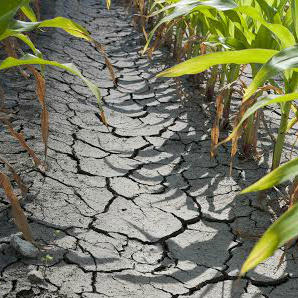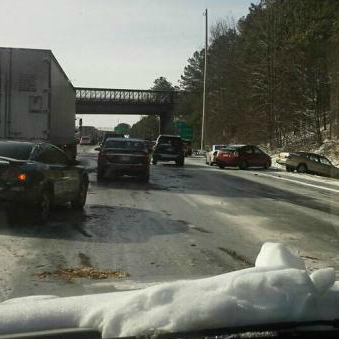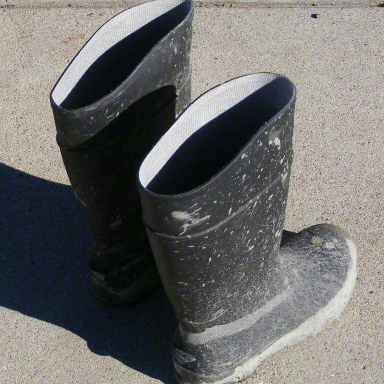When His disciples asked how they would recognize the times in which the Savior would return to the earth again, a part of Jesus’ answer was, “For nation shall rise against nation, and kingdom against kingdom: and there shall be famines, and pestilences, and earthquakes, in divers places. All these are the beginning of sorrows” (Matthew 24:7-8).
God Has Always Had a Plan for His Children
As a member of The Church of Jesus Christ of Latter-day Saints (often inadvertently called the Mormon Church), I believe that we are spirit children of a loving Heavenly Father. Wanting us to become like Him, God prepared a wonderful plan. We would go to an earth, obtain a mortal, physical body, and choose whether or not to accept the Gospel with Jesus Christ as Savior and obey all of God’s laws and commandments. God organized this world for us, and placed Adam and Eve, our first parents, in the Garden of Eden. When Adam and Eve partook of the forbidden fruit, they became subject to earthly physical laws and were then able to have children.
The most important aspect of God’s plan included the salvation of His children. Jesus Christ agreed to be our Savior, ransoming mankind with mercy through His great Atonement, where He incomprehensibly suffered for the sin, grief, and sorrow of mankind and then broke the bands of death enabling everyone to be resurrected.
Jesus promised that at the end of the world, He would come again. Prior to His return, wickedness would rapidly increase, and the world would endure severe calamities. Jesus also warned of people and situations that might persuade mankind to disbelieve in Him, the true Messiah. The Savior prophesied the destruction that would occur, and offered ways to withstand the devastating events.
Surviving the Last Days
Leaders of The Church of Jesus Christ have encouraged Latter-day Saints (or Mormons) to follow the Savior’s counsel to be prepared for the upheavals of the last days.
“Stand in the holy place”
“Watch therefore: for ye know not what hour your Lord doth come.”
“Therefore be ye also ready: for in such an hour as ye think not the Son of man cometh” (Matthew 24:15, 42, 44).
One way that as a Mormon, I follow this counsel is to prepare spiritually and temporally. I strengthen my relationship with God daily through scripture study and prayer. I attend the temple regularly. I keep my covenants, as much as possible, to obey God’s commandments and live a life that welcomes the Holy Ghost’s influence, enabling me to stand in the holy place. When faith is strong, fear dissipates.
Preparing physically is important, too. The Church counsels members to store food, water, clothing, emergency supplies, fuel (where possible), and cash on hand. At first the task seemed a little overwhelming, but as my husband and I worked on things a little at a time, we found that our preparations progressed more quickly than we expected. We still have a ways to go to be absolutely prepared, but we are making progress.
Church leader Vaughn J. Featherstone reminded Latter-day Saints
The Lord will make it possible, if we make a firm commitment … All we have
to do is to decide, commit to do it, and then keep the commitment. Miracles
will take place; the way will be opened … We will prove through our actions
our willingness to follow our beloved prophet and the Brethren, which will bring
security to us and our families.
Church leader Julie B. Beck encouraged self-reliance, too.
We become self-reliant through obtaining sufficient knowledge, education, and literacy; by managing money and resources wisely, being spiritually strong, preparing for emergencies and eventualities; and by having physical health and social and emotional well-being” (Julie B. Beck, The Welfare Responsibilities of the Relief Society President,” Basic Principle of Welfare and Self-Reliance (2009), 4-5).
Current Calamities
Several recent news events remind me of the Savior’s counsel to watch and be ready in all aspects of life.
More than half of the country’s fruit, nuts, and vegetables come from California. Did you know that 90% or more of all the almonds, artichokes, dates, figs, kiwi, persimmons, pistachios, prunes, raisins, strawberries, and walnuts consumed in the United States are grown in California, as well as 100% of the olives and 21% of the milk and cream? Not only just nuts and berries, but also most other fruit and vegetable varieties are grown by the truckload in California. You may think you don’t eat some of these, but do you use their byproducts such as olive oil? Many are used as ingredients in other foods we consume, such as ketchup and cereals. Higher prices on these crops will result in higher prices on any product using California-grown crops for ingredients.
Honeybee decline and zombification:
“In the last few years, a third of the bee population has been lost in Europe.”
“Farmers rely on bees to pollinate agriculture fields and produce honey, but there hasn’t been any sign of a widespread infestation, even though it remains unclear just how many bees across the continent have been infested, he said.”
Image by Michelle Nobles, from the Weather Channel story
Michelle Nobles, a mom stuck on an interstate in Atlanta for 21 hours with her 4 year old son, described how panic set in, and how grateful she was for the little comforts she had in the car.
“I don’t know how some people did it out there, not being able to use the restroom,” she said, noting especially “people who needed medication, and diabetics.
“I kept thinking, you look at TV and you see this, you see things like this happen to other people,” she said. “I told my husband, it’s our turn to be those people. At least we have a good car, we have heat, and we did have snacks.
“We did have each other at least,” she added. “It was a relief, just to have your family.”
Some argue that unemployment benefits are a disincentive to people finding employment. But the sheer number of our unemployed neighbors and family members speaks volumes about the fallibility of such a claim. According to The Washington Post, the long-term unemployment rate has not been as high as it is now since World War II. A jaw-dropping 4 million Americans have been out of work for 27 weeks or longer. The problems we face are systemic and structural, and the vast majority of the unemployed are crippled not by a lack of interest or drive, but of opportunity and access. That’s why long-term solutions for economic growth are needed.
My preparations might be used during a time of national disaster or during a personal disaster. If my preparations are swept away by flood or tornado, etc., I rely on the Lord’s promise that “if ye are prepared ye shall not fear” (Doctrine and Covenants 38:30). I know He keeps His promises.
Share some ways you have or are preparing in the comments below.
For resources and information on becoming more prepared, check out www.providentliving.org.





